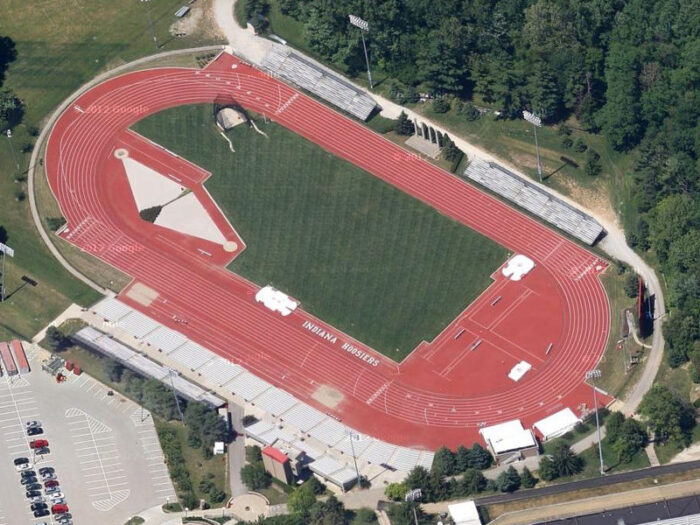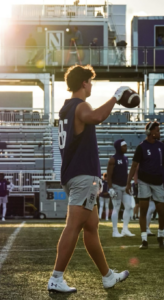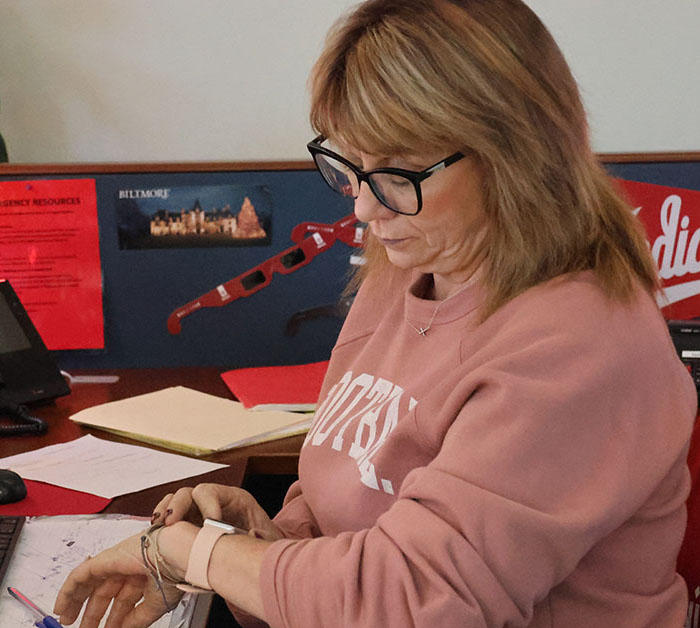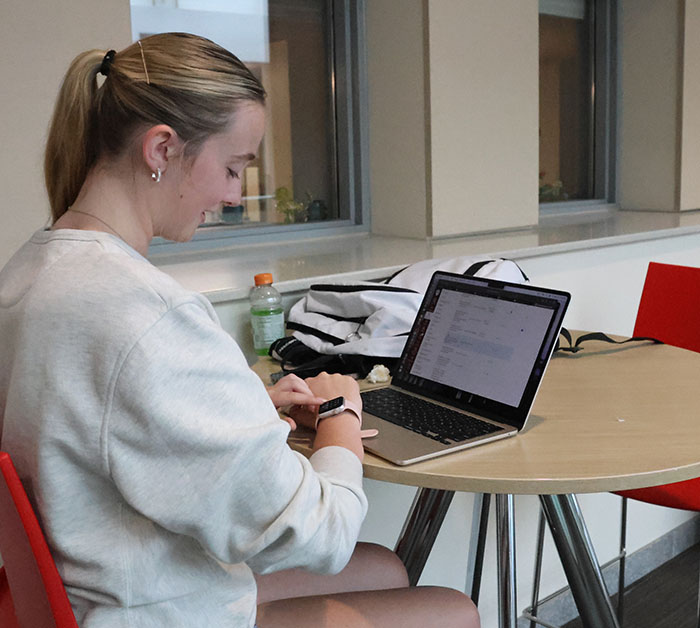Jeremy Weese

I'm an Indiana University student in the Media School studying Media Advertising. I'm from Cincinnati, Ohio and I hope to work at an ad agency one day.
By Dylan Rome, Jeremy Weese and Olivia Zwack
BLOOMINGTON, Ind. (Nov. 5 2024)
In June of 2021, the collegiate sports world went through a significant shift in its long-standing argument: should student-athletes gain revenue from their name, image, and likeness (NIL)? Three and a half years later we have seen the unmistakable impact NIL is making on the culture of sports (especially college football). Players run the risk of being selfish teammates by choosing popularity from the public over team victories.
NIL deals are altering the traditional trajectory from high school through college to the NFL, blurring the strict lines the NCAA once maintained between collegiate and professional athletes.
Although athletes have been generating millions of dollars in revenue for decades, the Supreme Court did not overturn this ruling until three short years ago. The highly debated argument was finally settled, and athletes were able to receive compensation. It must be made clear this is not “pay to play”. The NCAA is restricted from paying athletes directly. Athletes can earn money through external tunnels like social media and commercials. For some players, NIL opportunities can make staying in college more appealing than entering the pros if their earning abilities skyrocket at a collegiate level.
Rookies enter teams with a substantial amount of financial value, an unknown dynamic and power shift. The NFL’s structure to a rookie contract in the first round centers upon a four-year term with a fifth-year extension option and salaries are determined by draft order. The big rewards came after a fourth or fifth year in the league emphasizing experienced and committed players. NIL deals have destroyed the value system where athletes can now earn money as early as high school.
The days are over when draft day symbolizes the first financial reward for an athlete’s hard work, dedication, and talent. For high-scouted players, it marks a continuation of earnings and something way less significant.
In an interview with Aaron Lord, a track and field athlete here at Indiana University, he explained his experiences with NIL deals and observations from being in the NCAA. “Instead of them [college athletes] staying for 1 or 2 years in college and then signing a pro contract, players are staying longer in the NCAA,” Lord said. Previously, athletes weren’t permitted to earn money until reaching a professional level whereas now they have an opportunity to financially benefit more in college.

Lord said, “People who normally wouldn’t come into the NCAA are coming in now even internationally to try and make some money.” He described how track and field has been gaining traction across the globe. However, international athletes struggle to profit from NIL due to U.S. visa restrictions. While NIL opened doors for U.S, athletes, international students are restricted from these opportunities. The NCAA still offers exposure and the highest quality training for international athletes.

Dr. Clavio, an expert in NIL and head of sports media at Indiana University, stressed the challenges of balancing social media and being a college athlete by saying, “It’s pressure if you’re a college athlete with a social media following to maintain your audience and build upon your audience… and then there’s everyone else trying to catch up.” This quote highlights the chase for recognition on social media which can compete with getting better at your sport.
Along with striving for maximum financial compensation as a college athlete, Clavio said, “The quarterback elected to transfer because if he was indeed promised that money and it was not delivered, why should he stay?” Financial compensation is not promised at a professional level, forcing an athlete to bet on their abilities. In college, players can maximize their economic window with NIL. Uncompensated talents such as the example of a quarterback transferring show imperfections in NIL and room to improve.

Interviewing Patrick Shaller, a highly scouted freshman tight end on Northwestern football team he stated, “The big names look at their floor in the league [NFL] and their celling at college and decide the best financial decision”. The quote exemplifies a newly provocative financial question: should athletes stay in college longer? Shaller said, “I can already see college football becoming an unfair atmosphere where players stay longer than they need”. Before NIL, players leave college as early as possible to maximize financial earning now the phenomenon of staying keeps highly-skilled players in the NCAA.
The future presents an uncertain line between college and professional sports. The fear of unambitious colligate sports continues to rise.
Passersby in Bloomington share their thoughts on the latest NIL rulings. Many were eager to share their take on the latest news.
Cover Image: Aaron Lord, a track athlete at Indiana University, rounds a turn at one of his track practices. Lord has personally been affected by the latest NIL rulings.
Cover Image Credit: Olivia Zwack
Media Contacts
Jeremy Weese
Macy Bair
Aleta Shepherd
CUPERTINO, California (Sept. 9, 2014) —
Apple CEO Tim Cook, announces the new Apple Watch series 1 as the most functional and personal device all on your wrist allowing people to communicate efficiently and track their fitness. This new device lets customers communicate directly with contacts while also looking stylish through a small screen. The Apple Watch is customizable with different faces to choose from to your taste and different straps such as a stainless steel one to dress it up or a durable sports one for fitness adjusting to your taste.
Navigating comes with just a click of a button called the digital crown. To avoid blockage of the small screen the digital crown allows you to scroll and zoom. When the digital crown is pressed you are led back to the homepage and when held down siri is activated to assist with any questions and help navigate.
Health and fitness is also a huge aspect of the Apple Watch. An app has been installed called the workout app where you can set goals and see your fitness milestones. Another app is the fitness app allowing you to track your daily fitness like steps and your heart rate. On the inside of the watch there are four sapphire lenses that detect your pulse rate. All of these features give customers the motivation to get more active and inspire others to do the same.
The Apple Watch is a subtle and quick way to communicate with your contacts. Clicking the button below the digital crown leads you directly to your frequent contacts. New features like the digital touch are ways to subtly contact a friend by clicking on digital touch under their contact and giving a little tap or sketch to get their attention. The watch can also tell the difference between a tap and a press. When it feels the press you are given a whole new access to a range of more controls.
The Apple watch senses when the wrist is raised so a quick motion allows you to see the time along with any notifications that come in through your phone as they work together. A discrete buzz goes off when notifications like a text come in to let you know when someone is trying to reach you. The Apple Watch analyzes all texts and generates responses allowing you to


respond in one tap. Apple Maps has also been installed giving directions and buzzes when a turn is coming up. All these features create fast and easy communication between apple users.
This product has been designed to have a sleek simplistic look with three collections. The first series is the apple watch stainless steel and the second being the sport one with a 60% stronger case making it more durable. The last edition is made of 18k gold which is twice as hard as standard gold. Customers can decide which one matches their lifestyle most, adding another aspect of why this watch is so personal to the customer.
The Apple Watch has an inductive charger that aligns perfectly with the back that has a magnet, not requiring any aligning while attaching it. Wearing it all day then charging it every night is how customers will get the most use out of their watch.
Apple has worked hard to design a watch with great functionality while also being able to wear it in style. All the apps on the watch are adjusted to it and can be used to communicate, navigate, or entertain. With a quick raise of the wrist there are so many opportunities on such a small screen to help with day to day communication or quickly checking something without taking your phone out of your pocket.
Apple showcases the features of the Apple Watch. The video captivated the packed auditorium.
Tim Cook discusses the customizability and the goals surrounding creation of the Apple Watch. He describes the accuracy of the Watch as well.
###